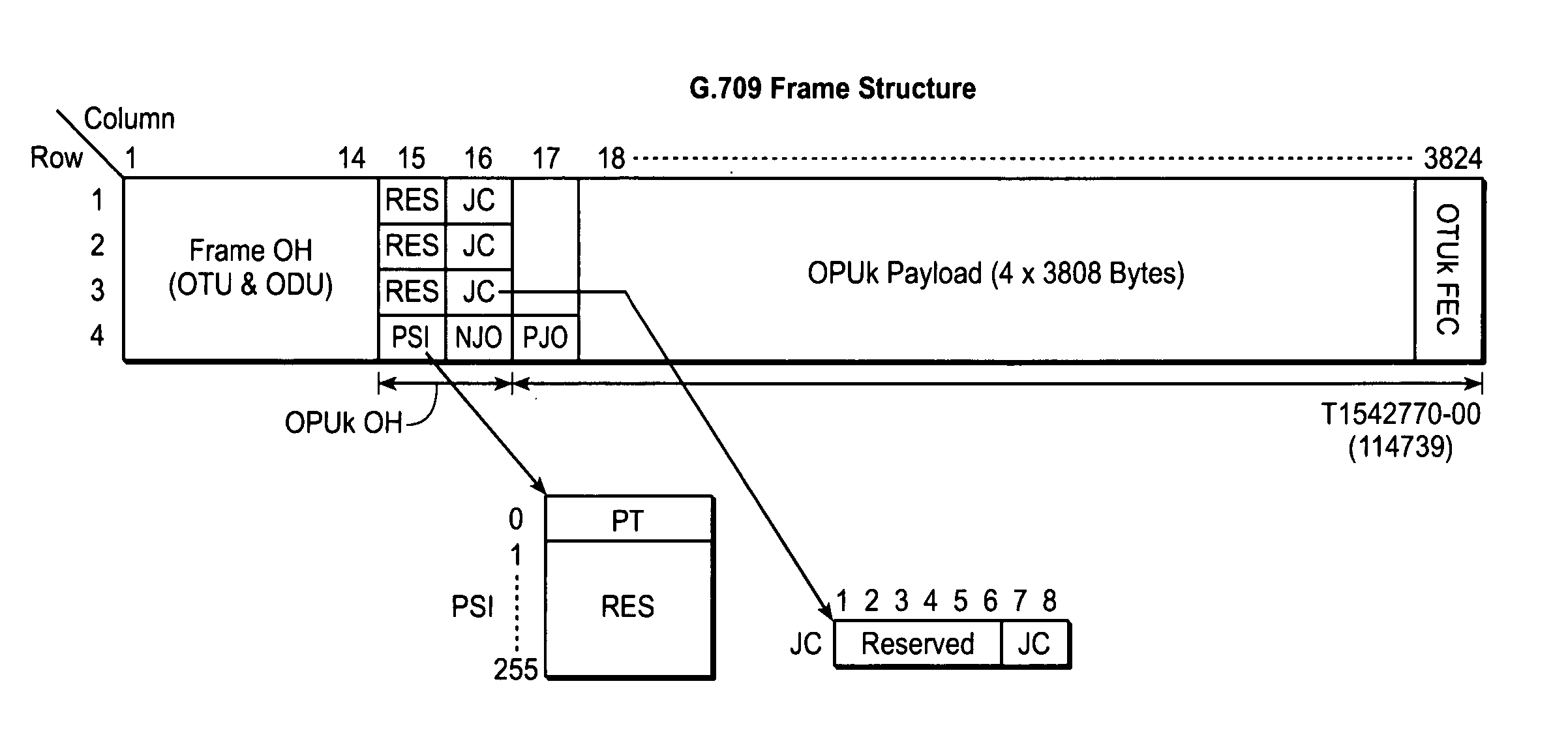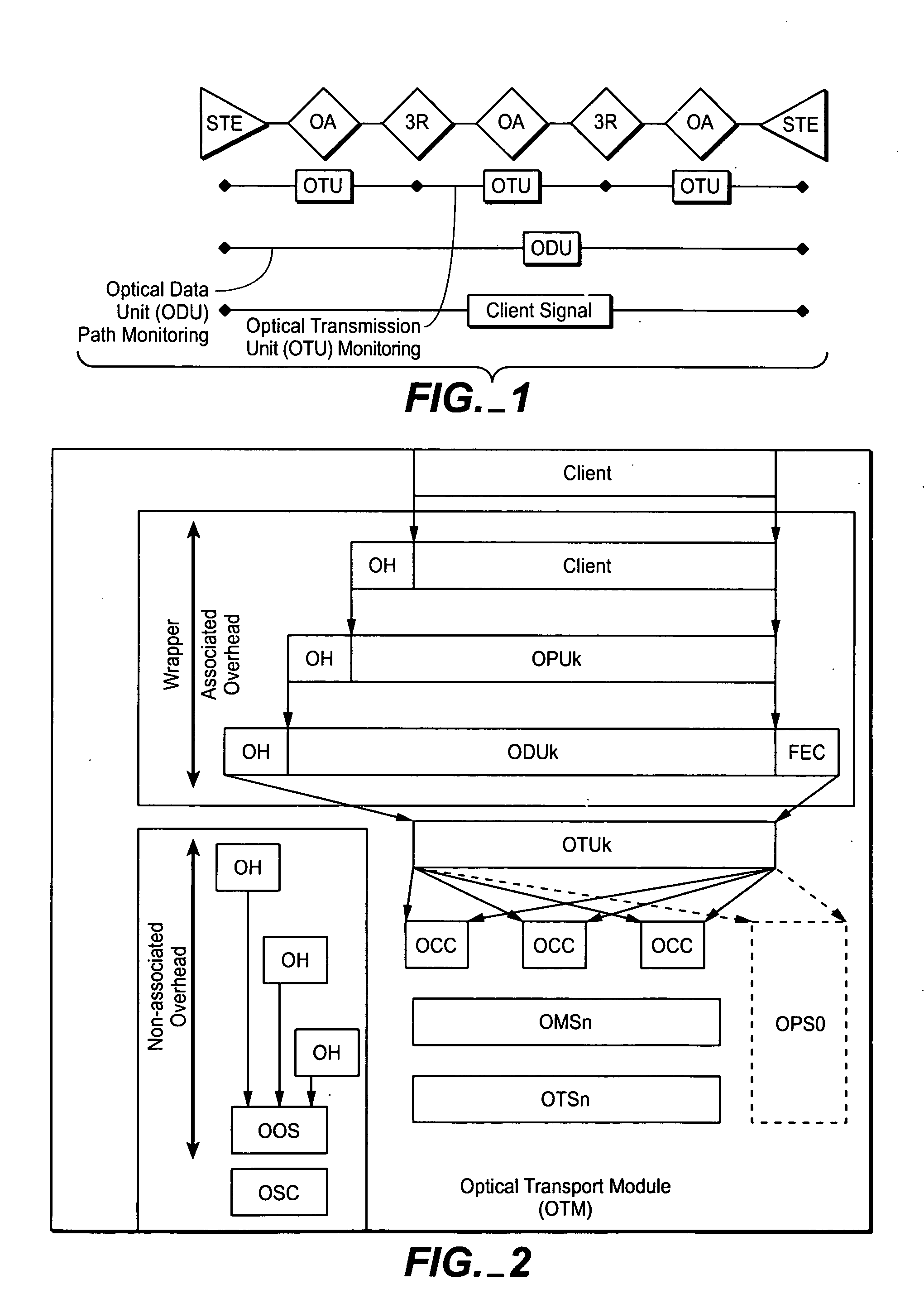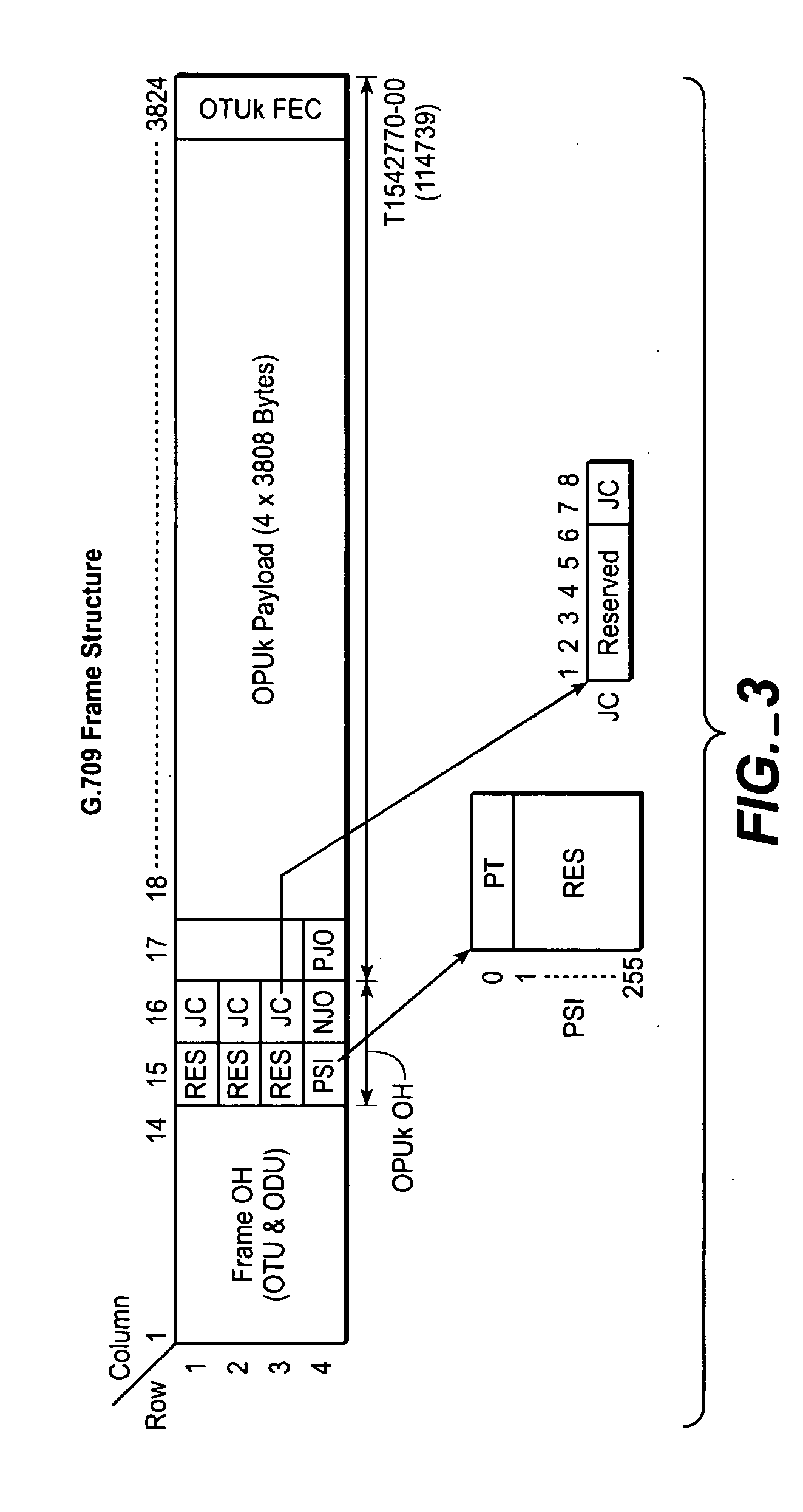Universal digital framer architecture for transport of client signals of any client payload and format type
a client signal and framer technology, applied in the field of digital communication system, can solve the problems of adding system costs (cogs) and no means for achieving the transport of each and every client signal, and achieve the effect of reducing system costs and reducing the required size or capacity
- Summary
- Abstract
- Description
- Claims
- Application Information
AI Technical Summary
Benefits of technology
Problems solved by technology
Method used
Image
Examples
Embodiment Construction
[0064] The digital optical network disclosed here is inherently asynchronous, and makes extensive use of OEO conversions at intermediate nodes, such as, signal regeneration nodes in the network, to provide “3R” functionality, i.e., any electronic signal reconditioning to correct for transmission impairments as well as 3R processing, such as, for example, but not limited to, FEC encoding, decoding and re-encoding, in addition to signal re-amplification (1R), signal reshaping (2R) and signal retiming (3R). See U.S. patent application Ser. No. 10 / 267,212, supra. In both of these respects (i.e., asynchronous operation and signal reconditioning), this network architecture partially runs counter to key architectural principles embodied in the ITU-T OTN architecture in general, and to the G.709 standard layering hierarchy in particular. In order to understand the application of this invention, it is important to understand digital wrapping as set forth in the current proposed draft for the...
PUM
 Login to View More
Login to View More Abstract
Description
Claims
Application Information
 Login to View More
Login to View More - R&D
- Intellectual Property
- Life Sciences
- Materials
- Tech Scout
- Unparalleled Data Quality
- Higher Quality Content
- 60% Fewer Hallucinations
Browse by: Latest US Patents, China's latest patents, Technical Efficacy Thesaurus, Application Domain, Technology Topic, Popular Technical Reports.
© 2025 PatSnap. All rights reserved.Legal|Privacy policy|Modern Slavery Act Transparency Statement|Sitemap|About US| Contact US: help@patsnap.com



